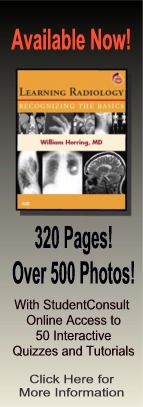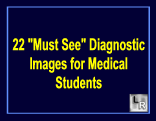| Cardiac | |
|---|---|
| GI | |
| Bone | |
| GU | |
| Neuro | |
| Peds | |
| Faculty | |
| Student | |
| Quizzes | |
| Image DDX | |
| Mobile | |
| |
Misc |
| Videocasts | |
What's the most likely diagnosis?
- 3 month-old male with chest x-ray for cold symptoms
1. Scimitar syndrome
2. Substernal thyroid
3. Neuroblastoma
4. Diaphragmatic hernia
5. Sequestration
Additional Images - CT and MRI
![]()
Answer:
.
3. Neuroblastoma
.
.
More (Click Discussion Tab)
Neuroblastoma
General Considerations
- Malignant tumor of neural crest cells
- Most common extracranial solid tumor in infancy
- 7.8% childhood cancers
- Most common posterior mediastinal mass in children
.
This Week
This podcast reviews the key imaging features and facts for congenital hip dislocation, Legg-Calve-Perthes Disease and slipped capital femoral epiphysis. It contains a mini-quiz and a chart to help remember the salient features of each |
Review descriptions of key imaging signs in the shorthand of Tweets by subscribing to this new LearningRadiology Twitter feed for your computer or cell phone
|
Key points on recognizing the most common fractures and dislocations |
Basic CT imaging of the brain focusing on the findings of cerebrovascular accidents |
The top diagnostic imaging diagnoses that all medical students should recognize according to the Alliance of Medical Student Educators in Radiology |
Recognizing normal and key abnormal intestinal gas patterns, free air and abdominal calcifications |
Some of the fundamentals of interpreting chest images |
| LearningRadiology.com |
is an award-winning educational website aimed primarily at medical students and radiology residents-in-training, containing lectures, handouts, images, Cases of the Week, archives of cases, quizzes, flashcards of differential diagnoses and “most commons” lists, primarily in the areas of chest, GI, GU cardiac, bone and neuroradiology. |




